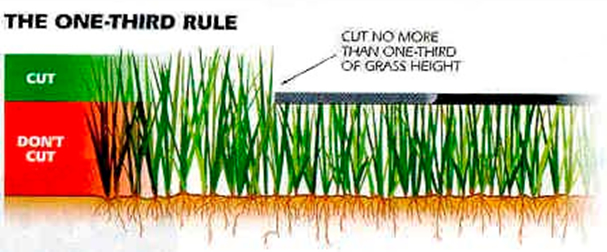Heritage Irrigation & Landscape LLC
5950 Executive Drive
Westland,MI 48185
Call us for a quote:734-727-9929
Yes, all plant material is guaranteed for a period of one year from the completion date of your job. Brick Paver Patios & Retaining Walls are guaranteed for a period of two years against sinking or heaving, and the pavers/retaining blocks are guaranteed against breakage for life. Tumbled stone products arrive with a “weathered” appearance and some minor flaking or chipping may occur.
Unfortunately there is more than one answer for that question. The spring and the fall usually offer cooler temperatures and more moisture in the soil. The summer is a difficult time for newly installed plant material due to the lack of moisture and high temperatures. In addition to the temperature, you need to understand the type of soil that you have. Before all other considerations, simply stick your hand in the soil down as far as you can and see how it feels to you. Be careful not to mistake cool dry soil for moisture content. For trees, you should place the hose at the trunk of the tree and leave the hose with the water coming out at a trickle. Leave the hose on each tree for approximately 15 minutes. Shrubs and Perennials should each be hand watered right in the center of the plant for approximately 1-2 minutes per plant.
Trees should be watered 1-2 times per week. Shrubs and Perennials should be watered 1-2 times per week
Trees should be watered at least every other day. Shrubs and Perennials should be watered every day or at least 5 times during the week. Customers with irrigation systems should be aware that your plant material does not require the same amount of moisture your lawn does. Your planting beds should be on a separate zone(s) than your lawn. Minimal moisture is usually all that is needed. Usually only 5-7 minutes per zone even in the summer. Consistency is the key here. Overall, you should adjust your watering based on your own evaluation of your site, soil, and planting size. Once your planting establishes itself after the first or second year, you can reduce the watering according to your site. Often by a half.
However your new lawn is installed, care is very important, particularly for the first month.
Successful seed germination depends on a few days of special care. To assure proper germination water regularly, we suggest two times a day in warm weather. Keeping the yard moist will maximize seed germination.
You may walk on the hydro seeded surface when watering. Try to walk only on areas that are dry, and try to not disturb the mulch mat. By watering regularly and keeping your new seedlings from drying out, you ensure the beginnings of a lawn that will make your neighbors green with envy.
Mowing can begin once the new lawn is 3″ tall in most areas. Mowing stimulates growth and increases thickness. Set the mower high at first, and then gradually lower the height. Try to cut no more than 1/3 of the grass at a time to avoid ripping the grass. Torn or ripped grass is susceptible to disease and fungus.

One general rule for mowing is that the shorter you want to mow, the more often you need to mow to maintain healthy grass.
About one month after seeding, fertilize your new lawn using a high nitrogen (the first of the 3 numbers on the bag) fertilizer. A high phosphorus or “starter fertilizer” was used when hydroseeding your lawn. The phosphorus will stimulate root growth, and in the early stages it is important to get good root growth before you stimulate a vigorous top growth with nitrogen
Yes, however they do not grow from below the patio. They grow as the weed seeds blow in and rest in the spaces between pavers. They are usually very easy to pull out by hand or spray with a weed killer. Another trick to combat weed growth is to sweep fine-grain sand into the spaces during the spring.
Yes, some heaving is to be expected as the ground freezes and thaws. However, when the ground settles in the spring, the patio/retaining wall will settle itself. We install paver products according to the manufacturer recommendation and feel confident that while some movement is inevitable, your patio or retaining wall will last for years to come.